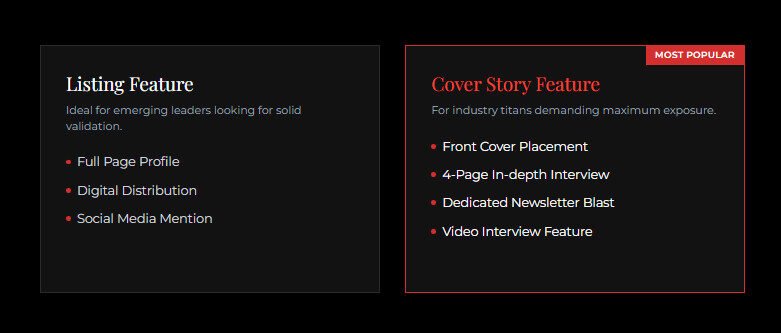Individuals constantly seek ways to improve their skill sets and increase their employability in today’s fast-paced and ever-changing job market. The concept of train-and-hire programs is one approach that has gained significant traction in recent years. The title captures the transformative role that these initiatives play in meeting the changing needs of both job seekers and employers. The demand for skilled professionals has never been greater as industries adapt to technological advancements and shifting skill requirements. These innovative initiatives are more relevant and promising than ever before, providing a win-win situation for both employers and job seekers.
Train-and-hire programs emerge as a strategic solution to align workforce preparation with industry demands. According to various sources, these programs are not merely training endeavors but rather holistic approaches to skill development. They cater to the immediate needs of employers, offering a pool of talent equipped with up-to-date, industry-specific skills. Simultaneously, for individuals seeking career advancement, these programs provide an unrivaled opportunity to improve their employability and effectively navigate the competitive job market.
1. Understanding Train-And-Hire Programs
Train-and-hire programs, also known as skill development initiatives, are critical in shaping a workforce that is aligned with the changing needs of industries. These programs go above and beyond traditional hiring processes, addressing specific skill gaps that prevent potential employees from meeting industry demands in response to the ever-changing nature of job markets. Tailoring training to industry requirements, enhancing their employability, and ensuring a smoother transition into professional roles, these initiatives empower individuals with practical, up-to-date skills. The emphasis on specialized training distinguishes train-and-hire programs as proactive solutions that not only benefit individuals seeking career advancement but also provide companies with a pipeline of talent ready to contribute meaningfully from day one.
2. Adaptability in a Dynamic Job Market
Adaptability is essential in today’s rapidly changing job market. Providing targeted training that is in line with current industry trends and advancements, train-and-hire programs excel at meeting this need. Job seekers participating in these programs gain a competitive edge, showcasing their ability to evolve with the industry’s changing landscape. This adaptability not only positions individuals as valuable assets to employers but also fosters a workplace culture of continuous learning. As industries change, the skill sets gained through these programs prepare individuals not only for current roles but also for future career advancements, making them resilient in the face of constant change.
3. Industry-Relevant Skill Development
Employers are increasingly looking for candidates with hands-on experience. Train-and-hire programs are designed to provide industry-relevant training, ensuring that participants graduate with the skills that employers require. This method significantly shortens the learning curve for new hires, making them valuable assets from the start. Beyond the immediate benefits for employers, this emphasis on industry-specific skills ensures that participants are not only prepared for current job roles but also for the changing demands of the workplace. Fostering a culture of continuous skill development, which contributes to long-term professional success, these programs enable individuals to stay ahead in their careers.
4. Cost-Effective Talent Acquisition
These programs offer employers a low-cost way to acquire talent. Companies can collaborate with training programs to tailor the curriculum to their specific needs rather than investing resources in lengthy recruitment processes. This not only speeds up the hiring process but also ensures a pool of candidates with the necessary skills. Aside from the immediate benefits of efficiency and skill alignment, the cost-effectiveness of collaborative recruitment extends to lower onboarding costs. Candidates are already familiar with the job-specific skills required; the training period is frequently shorter, allowing companies to quickly integrate new hires into their teams and projects. Because of this dual advantage of precision and speed, collaborative recruitment is a strategic and cost-effective approach for companies seeking optimal talent acquisition results.
5. Diversity and Inclusion Initiatives
Train-and-hire programs help industries with diversity and inclusion efforts. Providing accessible training opportunities, breaking down barriers to entry, and fostering a more inclusive workforce, these programs open doors for individuals from diverse backgrounds. This proactive approach not only addresses existing representation disparities but also fosters a culture of equity and belonging. It is important for train-and-hire initiatives to actively recruit candidates from diverse demographics so that their workforce reflects the wider community. As a result, companies that implement these programs not only increase their talent pool but also create a more innovative and dynamic workplace.
6. Success Stories: Realizing the Potential
Numerous success stories demonstrate the value of train-and-hire programs. Individuals who initially lacked industry-specific skills have successfully transitioned into thriving professionals, owing their success to the targeted training provided in these programs. Experis is a compelling example, for instance, of the “Hire-Train-Deploy” initiative. This program has empowered ambitious individuals, not initially qualified for certain roles, with IT skills, leading to their successful integration into the workforce. Another notable example is the “Associate2Tech” program, where participants undergo specialized training to transition from front-line roles to technical positions, showcasing the transformative impact of such initiatives. These success stories underscore the pivotal role train-and-hire programs play in unlocking the potential of individuals and addressing skill gaps in diverse industries.
7. Industry Collaboration and Endorsement
The collaboration of training providers and industry leaders not only reinforces the success of train-and-hire programs but also plays an important role in shaping the future workforce. Collaborations allow training programs to stay current on industry trends and technological advancements, ensuring that participants have the most relevant skills. Employers benefit from training that directly addresses the industry’s evolving needs; as a result, program graduates are highly sought after. This industry endorsement not only improves graduates’ employability but also fosters a dynamic link between education and the professional landscape.
8. The Rise of Tech-Driven Programs
Technology is not only responsive to the demands of the digital age, but it also serves as a catalyst for innovation and progress through train-and-hire programs. With cutting-edge technologies incorporated into their curriculum, these programs prepare participants for the dynamic landscape of emerging fields such as artificial intelligence, data science, and cybersecurity. Providing a workforce prepared to face future challenges, this strategic alignment with technological advancements not only improves program graduates’ employability but also contributes to the evolution of industries.
9. Overcoming Skepticism: Addressing Concerns
While the advantages of train-and-hire programs are obvious, skepticism may persist. Addressing concerns about program quality, industry relevance, and outcomes is critical. Establishing a robust feedback loop is critical for building trust and credibility in train-and-hire programs. Obtaining feedback from both program participants and partnering industries regularly allows for continuous improvement. When constructive feedback is incorporated into program enhancements, evolving industry needs are addressed, and success stories are highlighted, skepticism can be transformed into confidence. Furthermore, encouraging open dialogue with stakeholders through forums and Q&A sessions reinforces the program’s commitment to transparency, ultimately strengthening its reputation and ensuring its adaptability and responsiveness to the changing employment landscape.
10. Looking Ahead: The Future of Train-And-Hire Programs
Train-and-hire programs are expected to undergo a paradigm shift as the demand for specialized skills grows in the ever-changing job landscape. To tailor training experiences for individual participants, future programs are likely to make use of advanced technologies such as virtual reality, artificial intelligence, and personalized learning algorithms. Collaborations between industries, educational institutions, and government agencies may also strengthen, promoting a more holistic approach to skill development. The future of train-and-hire programs is exciting, combining innovation, strategic partnerships, and a commitment to lifelong learning to ensure a workforce that not only meets but exceeds the dynamic requirements of tomorrow’s industries.
Conclusion:
Train-and-hire programs are a dynamic and effective approach to meeting the ever-changing job market. These programs enable individuals to acquire industry-specific skills through targeted training, making them valuable contributors to the workforce. In the future, the relevance and promise of train-and-hire programs will grow, providing a blueprint for a more agile and skilled workforce.










